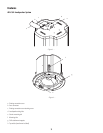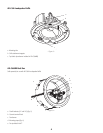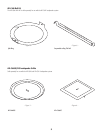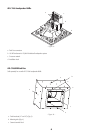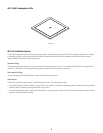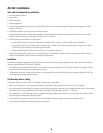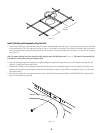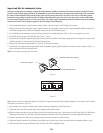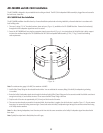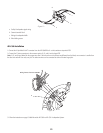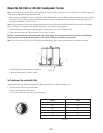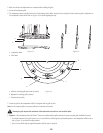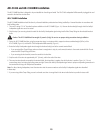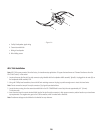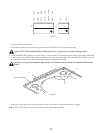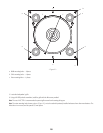
11
12
AD-C800BB and AD-C820 Installation
The AD-C800BB is designed to be pre-installed into the ceiling and wired. The AD-C820 Loudspeaker Baffle assembly is plugged into and secured to
the back box at a later time.
AD-C800BB Back Box Installation
The AD-C800BB installation should be done by a licensed installation professional and wiring installed by a licensed electrician in accordance with
local building codes.
1. There are 5 wiring ½" & ¾" knockout locations, shown as item a (Figure 16), available on the AD-C800BB back box. Remove the knockout(s)
through which the loudspeaker signal wires are to be routed.
2. Secure the AD-C800BB back box using the suspension straps shown as item d (Figure 4), to a structural part of the facility that is able to support
ten times the combined weight of the AD-C800BB and the AD-C820 Loudspeaker Baffle assembly (17 lbs. / 7.7 Kg.). Consult local building
code requirements.
Note: The minimum wire gauge is 20 AWG, the maximum is 8 AWG.
3. Install a Wire Clamp Fitting into the selected knockout holes. You can substitute the necessary fitting if the facility’s loudspeaker signal wiring
is in conduit.
4. Route the facility’s loudspeaker signal wires through the knockout hole(s)/Wire Clamp Fittings and to the ceramic terminal block. Make sure there is
enough wire to strip, tin, and connect the wires. Do not secure the Wire Clamp Fitting at this time.
5. Strip the ends of the wires to approximately 0.4"(10 mm), and tin the ends of the wires.
6. There are two wires already connected to the terminal block; the striped wire is negative, the solid color wire is positive (Figure 17). Do not remove
these wires, but ensure the locking screws are tight. Connect and secure the facility’s loudspeaker signal wiring to the ceramic terminal block using
a #1 Phillips head screwdriver.
Note: For daisy-chaining loudspeakers, insert the extra pair of wires into the same connections as the facility’s loudspeaker signal wires described in
these steps.
Note: Typically the striped wire is black/white, the solid is gray.
a
a
a
a
a
– Figure 16 –



